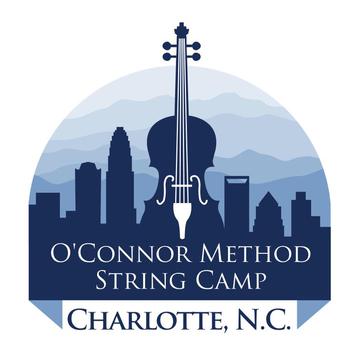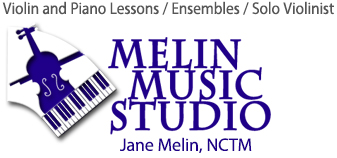 I just returned from Teacher Training in Mark O’Connor’s Violin Method Books 3 and 4, at his String Camp in North Carolina. I got my Books 1 and 2 training in 2011, when the method was new (it was introduced in 2009) and I was also relatively new to violin teaching. I was still developing my teaching approach and looking for alternatives to the ubiquitous Suzuki Method repertoire and teaching style. Now that the O’Connor Method has matured and I have also grown as a teacher, I’m thinking more about its place in my studio and how to use it most effectively.
I just returned from Teacher Training in Mark O’Connor’s Violin Method Books 3 and 4, at his String Camp in North Carolina. I got my Books 1 and 2 training in 2011, when the method was new (it was introduced in 2009) and I was also relatively new to violin teaching. I was still developing my teaching approach and looking for alternatives to the ubiquitous Suzuki Method repertoire and teaching style. Now that the O’Connor Method has matured and I have also grown as a teacher, I’m thinking more about its place in my studio and how to use it most effectively.
Mark O’Connor (MOC) is passionate about celebrating and preserving American “roots” music for strings. Broadly defined, it’s music “from the Americas” (both continents) that reaches back into our earliest history. It’s music that bubbled up from “the people,” whether indigenous, or African and European transplants. It represents the melting pot that is the best part of our American heritage. When you play a Mexican mariachi piece with a Czech polka beat that is popular with Texas folk fiddlers, that’s the melting pot. When you play a French Canadian fiddle tune that swings with the rhythms of African American ragtime, that’s the melting pot. There’s Dvorak’s New World Symphony themes with their Native American melodies and rhythms. There’s 14 variations on “Boil ’em Cabbage Down,” a 400-year-old tune with African influences. There’s heartfelt spirituals from “Amazing Grace” to “We Shall Overcome.” In the historical notes to each piece, there’s story after story about the crossover influences that contributed to each tune — some of them by unknown composers. Many of the tunes have lyrics, and all of them have a groove (internal beat).
This music is in danger of extinction. Music teachers note with amazement and concern that today’s children no longer know the heritage folk songs that show up in teaching books for every instrument, from “Old MacDonald” and “She’ll Be Coming Round the Mountain” to Stephen Foster’s classics like “Camptown Races.” Exposure to classical music is even less common. We’re seeing a generation of kids raised on simplistic pop music and Spotify hits, which quickly become stale and disappear. But “classics,” whether orchestral or folk/pop, have survived for a reason: they are Really Good Music. The O’Connor Method puts these wonderful tunes and styles on a pedestal, and effectively demonstrates how today’s popular music owes so much to these common roots.
But there’s more to the O’Connor Method than simply a music history lesson. There’s joy. I couldn’t begin to describe the pure joy of sitting in a circle with a hundred kids and grownups, playing these tunes together to the strum of a guitar and the thump of a string bass, toes tapping. The central tune was always there, along with harmonies and improvised flourishes that fit right in. The freedom to play off-the-page was infectious and is a huge part of the Method’s emphasis. I plead guilty to not encouraging my students enough in their improvising, and I hope to bring a little more of that spirit to future lessons in the MOC materials.
I now have a better handle on the progression of the MOC Method books. Books 1 and 2 introduce the basic non-classical techniques found in folk/jazz violin playing: double stops and drones, slides, swing rhythms, percussive chopping, improvisation, blues scales, chord progressions. They clearly move forward at about the same pace as Suzuki Books 1-2. MOC Books 3 and 4, on the other hand, ramp up very quickly, and that is on purpose. I had noticed this and found it hard to match them difficulty-wise with the Suzuki Book progression. Now I understand why: they are designed for students who are really dedicated to pursuing the folk “track” and will probably focus on this more than on standard classical repertoire. These may be students who would rather form a folk, rock or jazz combo with friends than join their school orchestra or community youth symphony. And that is fine! I want to keep students engaged in making music for as long as possible. And even though my personal “thing” is definitely classical/orchestral, I am excited by the learning process of mastering an O’Connor Method tune like Emily’s Reel (recorded with Yo-Yo Ma) or “Tico-Tico No Fubá,” the Brazilian choro song that was a favorite of The Grateful Dead.
So to sum up: I can use the MOC Method as the primary teaching vehicle for the students who prefer this style of music, to be supplemented by classical pieces for well-rounded musicianship. Conversely, “classical-track” students will be introduced to selected MOC repertoire from Books 1 and 2 for the same reason. Teaching from MOC Books 3 and 4 will be reserved for students who obtained the foundational skills and musical language from thorough study of Books 1 and 2, and who wish to focus on this style of music as much as or more than classical. And we might just have a jam session at a future recital.
